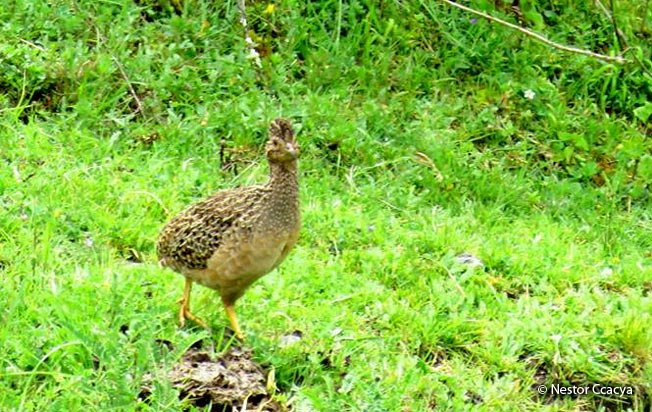Order: Tinamiformes | Family: Tinamidae | IUCN Status: Least Concern

Age: Adult | Sex: Unknown | Loc. Lomas de Lachay, Lima

Age: Adult | Sex: Unknown | Loc. Lomas de Lachay, Lima

Age: Adult | Sex: Unknown | Loc. Arequipa, Peru

Age: Adult | Sex: Unknown | Loc. Cusco, Peru
Status: The Andean Tinamou is the most common and widespread of Tinamous of the Andes. It generally ranges at elevations ranging between 2200-3200 m, but it also occurs in the dry deciduous forest of Northwest Peru, and near sea level in “Coastal Lomas”. It also occurs in Ec, Bo, and Ch.
Name in Spanish: Perdiz Andina.
Sub-species: Andean Tinamou (Nothoprocta pentlandii ambigua), Cory 1915. SW Ecuador & NW Peru.
(N. p. niethammeri), Koepcke 1968. WC Peru.
(N. p. oustaleti), Berlepsch and Stolzmann 1901. C & S Peru.
(N. p. fulvescens), Berlepsch 1902. SE Peru.
Meaning of Name: Nothoprocta: Gr. Nothos= false, spurious and proktos= the tail. In reference to a short tail. pentlandii: in honor of Joseph Barclay Pentland (1798-1973) Irish traveler, explorer, and diplomat in Bolivia.
 Voice
VoiceReferences:
-
- Species range based on: Schulenberg, T. S., D. F. Stotz, and L. Rico. 2006. Distribution maps of the birds of Peru, version 1.0. Environment, Culture & Conservation (ECCo). The Field Museum. http://fm2.fieldmuseum.org/uw_test/birdsofperu on 08/01/2015.